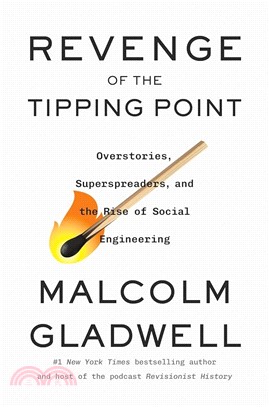Handbook Of Measuring System Design 3V Set
商品資訊
ISBN13:9780470021439
出版社:John Wiley & Sons Inc
作者:Sydenham
出版日:2005/01/21
裝訂/頁數:精裝/1648頁
商品簡介
Measuring systems lie at the heart of all science, engineering and technology, and are used to quantify physical phenomena such as temperature, pressure, voltage and current. Rapid advances in computing and electronics have enabled the development of highly sophisticated measuring systems that can be utilised across many industrial fields.
The Handbook of Measuring System Design provides an authoritative and comprehensive reference that addresses a wide range of measurement-specific design and application problems in the fields of engineering and technology. Building on a thorough treatment of foundational topics the Handbook presents a modern, ‘systems thinking’ approach and covers many areas that have received little attention elsewhere (systems, safety, design, legal and artificial intelligence).
作者簡介
Richard Thorn has MSc and PhD degrees from Bradford University, UK. He has held research or academic positions in Australia, Norway and the UK. He is currently at the University of Derby, UK.
目次
Contributors.
Preface.
Abbreviations and Acronyms.
Introduction.
PART 1. FOUNDATIONS OF MEASURING.
SECTION 1. THE PROCESS OF MEASURING.
1. Sophistication of Measurement and its Body of Knowledge (Peter H. Sydenham).
2. Organization of Instrument Science (Joseph McGhee).
3. Measures and Metrics; Their Application (Peter H. Sydenham)
4. Economic Consideration of Measurement (Peter H. Sydenham).
5. Humans in the Real World (Joseph McGhee).
6. Substructure of Human-Machine Systems (Joseph McGhee).
SECTION 2. MEASURING THEORY AND PHILOSOPHY.
7. Introduction to Measurement Theory and Philosophy (Ludwik Finkelstein).
8. Formal Theory of Measurement (Ludwik Finkelstein).
9. Nature and Properties of Measurement (Ludwik Finkelstein).
10. Extensions of the Representational Theory of Measurement (Ludwik Finkelstein).
11. Measurement Theory in Physical, Social, and Psychological Science (Ludwik Finkelstein).
12. Fuzzy Approaches for Measurement (Eric Benoit, Laurent Foulloy and Gilles Mauris).
13. Signals, Information and Knowledge, and Meaning (Qing Ping Yang).
14. Hierarchical Aspects of Measurement Systems (Joseph McGhee).
15. Typical Measurement Systems Architecture (Joseph McGhee).
SECTION 3. ENVIRONMENTAL FACTORS.
16. Reduction of Influence Factors (Paul P.L. Regtien)
17. EMC and EMI (Kim R. Fowler).
SECTION 4. FEEDBACK IN MEASURING SYSTEMS.
18. Nature and Scope of Closed-loop Systems (Peter H. Sydenham).
19. Dynamic Behavior of Closed-loop Systems (Peter H. Sydenham).
20. Closed-loop Sampled Data Systems (Peter H. Sydenham).
21. Nonlinear Closed-loop Systems (Peter H. Sydenham).
SECTION 5. MESSAGING THEORY.
22. Characteristics and Theory of Knowledge (Luca P. Mari).
23. Principles of Semiotics as Related to Measurement (Luca P. Mari).
24. Principles of Epistemology as Related to Measurement (Timothy Lindsay John Ferris).
SECTION 6. SIGNAL THEORY.
25. Introduction to Signals in Physical Systems (Eugen Georg Woschni).
26. Signal Classification (Eugen Georg Woschni).
27. Signals in the Frequency Domain (Eugen Georg Woschni)).
28. Signals in the Time Domain (Eugen Georg Woschni).
29. Relationship Between Signals in the Time and Frequency Domain (Eugen Georg Woschni).
30. Statistical Signal Representations (Eugen Georg Woschni).
31. Discrete Signal Theory (Eugen Georg Woschni).
32. Geometrical Signal Representation (Eugen Georg Woschni).
33. Coding Theory and its Application to Measurement (Eugen Georg Woschni).
34. Modulation Theory (Eugen Georg Woschni).
SECTION 7. SYSTEMS THEORY.
35. Systems in the Time-Domain (Eugen Georg Woschni).
36. Systems in the Frequency Domain (Eugen Georg Woschni)
37. Relationship Between Systems in the Time and Frequency Domain (Eugen Georg Woschni).
38. Stability Issues (Eugen Georg Woschni).
SECTION 8. SOURCES OF INFORMATION ON MEASUREMENT.
39. Characteristics of Data, Information, Knowledge, and Wisdom (Timothy Lindsay John Ferris).
40. Sources of Information (Peter H. Sydenham).
41. Terminology and Classification of Measurement Systems (Peter H. Sydenham).
42. Information Databases of Relevance to Measurement (Peter H. Sydenham).
PART 2. UNITS, STANDARDS AND CALIBRATION.
SECTION 1. STANDARDS SUPPORTING MEASUREMENT.
43. Units (Brian W. Petley).
44. Types of Paper Standards and their Purpose (Halit Eren).
SECTION 2. CALIBRATION.
45. Calibration Process (Halit Eren).
46. Calibration Interval (Peter H. Sydenham).
47. Internet Calibration (Richard A. Dudley).
PART 3. ERROR AND UNCERTAINTY.
SECTION 1. ERROR AND UNCERTAINTY.
48. Common Sources of Errors in Measurement Systems (Dietrich Hofmann).
49. General Characterization of Systematic and Stochastic Errors (Martin Halaj).
50. Errors in Signal Systems (Eugen Georg Woschni).
51. Errors in Digital Signal Systems (Luca P. Mari).
52. Error Models, Error Budgets and their Calculation (Rudolf Palencár).
53. Calculation and Treatment of Errors (Joseph McGhee).
54. Explanation of Key Error and Uncertainty Concepts and Terms (Luca P. Mari).
55. Uncertainty Determination (Joseph McGhee).
PART 4. MEASURING SYSTEM BEHAVIOR.
SECTION 1. MEASURING SYSTEM SPECIFICATION.
56. Transfer Characteristics of Instrument Stages (Peter H. Sydenham).
57. Static Considerations of General Instrumentation (Peter H. Sydenham).
58. Description of Accuracy: Linearity, and Drift (Peter H. Sydenham).
59. Introduction to the Dynamic Regime of Measurement Systems (Peter H. Sydenham).
60. Zero-order System Dynamics (Peter H. Sydenham).
61. First-order System Dynamics (Peter H. Sydenham).
62. Second-order System Dynamics (Peter H. Sydenham).
VOLUME 2
PART 5. MEASURING SYSTEM DESIGN.
SECTION 1. ENGINEERING A MEASURING SYSTEM.
63. Outline of Systems Thinking (Peter H. Sydenham).
64. Executing A Measuring System Design (Peter H. Sydenham).
65. Life Cycle Concept (Floyd Guyton Patterson Jr.).
66. Phases of System Life Cycle (Kim R. Fowler).
67. Principle of Concept of Operations (ConOps) (Jack Ring).
68. Setting the System Boundaries (Joseph McGhee).
69. Requirements Allocation (Andrew Kusiak and Fang Qin).
SECTION 2. DESIGN METHODOLOGIES.
70. Measuring System Design Methodologies (Ludwik Finkelstein).
71. Modeling Methodology (Peter H. Sydenham).
72. Mathematical Methods of Optimization (Halit Eren).
SECTION 3. ELECTRONIC AND ELECTRICAL REGIME.
73. Overview of Electrical and Electronic Technique (Peter H. Sydenham).
74. Basic Electronic Components (Peter H. Sydenham).
75. Electronic System Building Blocks (Peter H. Sydenham).
76. Electronic Systems Design (Peter H. Sydenham).
77. Limits of Detection in Electronic Systems (Peter H. Sydenham).
78. Embedded Systems (Timothy Wilmshurst).
79. Testing Electronic Systems (Patrick D.T. O’Connor).
SECTION 4. FINE MECHANICAL REGIME.
80. Principles of Fine Mechanics – Kinematic and Elastic Designs (Peter H. Sydenham).
81. Principles of Fine Mechanics – Systems Considerations (Peter H. Sydenham).
82. Kinematical Regime – Members and Linkages (Peter H. Sydenham).
83. Kinematical Regime - Fasteners, Bearings (Peter H. Sydenham
84. 83. Kinematical Regime – Rotary Motion (Peter H. Sydenham
85. Elastic Regime of Design – Design Principles (Peter H. Sydenham).
86. Elastic Regime of Design – Spring Systems (Peter H. Sydenham).
87. Elastic Regime of Design – Plates and Bimorphs (Peter H. Sydenham).
88. Error Sources in Fine Mechanics (Peter H. Sydenham).
SECTION 5. VISIBLE RADIATION REGIME.
89. Optical Materials (Pak L. Chu).
90. Optical Elements (Pak L. Chu).
91. Light Sources and Detectors (Miroslaw Jonasz).
92. Optical Measuring Instruments (Peter H. Sydenham).
93. Testing Optical and Other Radiation Systems (Alan J. Cormier).
SECTION 6. HUMAN FACTORS ENGINEERIN.
94. Human Factors Engineering (Nicholas I. Beagley).
95. Human-Machine Interface (Nicholas I. Beagley).
96. The Domains of Human Factors Integration (Nicholas I. Beagley).
97. Design Methodology (Nicholas I. Beagley).
SECTION 7. QUALITY IN MEASURING SYSTEMS.
98. Reliability and Maintainability (Patrick D.T. O’Connor).
99. Safety Organization (Peter H. Sydenham).
100. Safety Analysis Methods (Peter H. Sydenham).
101. Assessing and Demonstrating Safety (Peter H. Sydenham).
102. Introduction to the Legal Process (Christopher Sweet).
103. Legal Liability Issues for Designers – A Case Study (Christopher Sweet).
PART 6. MODELING MEASURING SYSTEMS.
SECTION 1. MODELING MEASURING SYSTEMS.
104. Models of the Measurement Process (Luca P. Mari).
105. Modeling with LabVIEW™ (Wieslaw Ttaczala).
106. Virtual Instrumentation in Physics (Wieslaw Ttaczala).
PART 7. ELEMENTS: A – SENSORS.
SECTION 1. SENSOR FUNDAMENTALS.
107. Principles of Sensor Science (Joseph McGhee).
108. Transducer Fundamentals (Paul P.L. Regtien).
109. Structure and Energy in Sensor Systems (Joseph McGhee).
110. Signal/Energy Matrix Modeling (Joseph McGhee).
111. Classification of Sensors (Joseph McGhee).
112. Systematic Description of Sensors (Paul P.L. Regtien).
113. Force-feedback Sensors (Barry E. Jones).
SECTION 2. THE SENSING INTERFACE.
114. Models of the Sensor Interface (Qing Ping Yang).
115. Designing the Sensor Interface (Qing Ping Yang).
116. Selection of Sensors (Paul P.L. Regtien).
117. Materials in Measuring Systems (Peter H. Sydenham).
118. Ultrasonic Sensors (Peter J. Lesniewski).
119. Ultrasonic Instrumentation Principles (Lawrence C. Lynnworth).
120. Ultrasonic Instrumentation Design (Lawrence C. Lynnworth).
PART 8. ELEMENTS: B – SIGNAL CONDITIONING.
SECTION 1. ANALOG SIGNAL CONDITIONING.
121. Signals in the Presence of Noise (Richard Burdett).
122. Operational Amplifiers (Joseph McGhee).
123. Instrumentation Amplifiers (Joseph McGhee).
124. Specialized Amplifiers for Measurement Systems (Joseph McGhee).
125. Outline of Purpose of Analog Data Filters (Joseph McGhee).
SECTION 2. ELECTRICAL BRIDGES.
126. Electrical Bridge Circuits – Basic Information (Zygmunt L. Warsza).
127. Unbalanced DC Bridges (Zygmunt L. Warsza).
SECTION 3. AI SIGNAL PROCESSING TECHNIQUES>
128. Name and Scope of AI Techniques (Ajith Abraham).
129. Artificial Neural Networks (Ajith Abraham).
130. Rule-based Expert Systems (Ajith Abraham).
131. Evolution Computation (Ajith Abraham).
VOLUME 3
PART 9. ELEMENTS: C – DATA ACQUISITION AND PROCESSING SYSTEMS.
SECTION 1. DAS COMPONENTS.
132. Data Acquisition Systems (DAS) in General (Gerd Wöstenkühler).
133. Amplifiers and Filters for DAS (Gerd Wöstenkühler).
134. Analog Multiplexers (Gerd Wöstenkühler).
135. Sample-hold Circuits (Gerd Wöstenkühler).
136. Quantizing Theory Relevant to DAS (Gerd Wöstenkühler).
137. Coding for Data Converters (Gerd Wöstenkühler).
138. Sampling Theory Relevant to DAS (Gerd Wöstenkühler).
139. Analog-to-Digital (A/D) Converters (Gerd Wöstenkühler).
140. Integrating Type (A/D) Converters (Gerd Wöstenkühler).
141. Digital-to-Analog (D/A) Converters (Gerd Wöstenkühler).
SECTION 2. DIGITAL SIGNAL PROCESSING (DSP).
142. Z-transforms (Armar Bousbaine).
143. DFT and FFTs (Gerd Wöstenkühler).
144. DSP Chip Sets (Iain Paterson-Stephens).
145. DSP Tools (Iain Paterson-Stephens).
146. Principles of DSP Hardware Design (Iain Paterson-Stephens).
147. Ideal Digital Filters Approximation (Joseph McGhee).
148. General Performance of the Digital Filter (Joseph McGhee).
149. Low-, High-, and Band-pass Digital Filters (Joseph McGhee).
150. Finite Impulse Response (IIR) Digital Filters (Joseph McGhee).
151. Finite Impulse Response (FIR) Digital Filters (Joseph McGhee).
SECTION 3. COMPUTERS IN MEASURING SYSTEMS.
152. Fundamentals of the Stored Program Digital Computer (Joseph McGhee).
153. Single Address Instruction Microcomputer (Joseph McGhee).
154. Internal Operation of the Microprocessor (Joseph McGhee).
155. External Operation of the Microprocessor (Joseph McGhee).
156. Memory Management in the Microprocessor (Joseph McGhee).
157. Data Acceleration in Computers (Joseph McGhee).
158. Microcontroller Systems (Joseph McGhee).
159. Designing and Building Software for Measuring Systems (Joseph E. Kasser).
SECTION 4. INTELLIGENT MEASURING SYSTEMS.
160. Smart Sensor System Features (Peter H. Sydenham).
161. Knowledge-based Systems (Dietrich Hofmann).
PART 10. ELEMENTS: D – MEMS.
SECTION 1. MICRO ELECTRO MECHANICAL SYSTEMS (MEMS).
162. Principles of MEMS (Janusz Bryzek).
163. Uses and Benefits of MEMS (Janusz Bryzek).
164. Principles of MEMS Actuators (Janusz Bryzek).
PART 11. ELEMENTS: E – COMMUNICATION IN MEASURING SYSTEMS.
SECTION 1. DISTRIBUTED AND NETWORKED MEASURING SYSTEMS.
165. Introduction to Networked Instrumentation (Joseph McGhee).
166. Instrument Interconnection (Joseph McGhee).
167. Asynchronous and Synchronous Interface Protocols (Joseph McGhee).
168. RS 232 and EIA/TIA 232 Serial Interface (Joseph McGhee).
169. Voltage and Current Loop Transmission (Joseph McGhee).
170. IEEE-488 Instrumentation Bus (Joseph McGhee).
171. Local Area (LANs) and Wide Area Networks (WANs) (Joseph McGhee).
172. Fieldbus Systems (Halit Eren).
173. Scheduling Systems (Emil Michta).
PART 12. ELEMENTS: F – SIGNALS AND NOISE.
SECTION 1. NOISE AND INTERFERENCE.
174. Typical Signals Arising in Measurement (Eugen Georg Woschni).
175. Comparison of Analog and Digital Signal Handling (Joseph McGhee).
176. Signals and Signal-t0-noise Ratio (Richard Burdett).
177. Grounding and Shielding (Kim R. Fowler).
178. Noise Matching and Preamplifier Selection (Richard Burdett).
179. Input Connections; Grounding and Shielding (Richard Burdett).
SECTION 2. SIGNAL RECOVERY IN THE PRESENCE OF NOISE.
180. Bandwidth Reduction of Baseband DC Signals (Richard Burdett).
181. Amplitude Modulated Signals: The Lock-in Amplifier (Richard Burdett).
182. Boxcar and Signal Averages (Richard Burdett).
183. Correlators in Signal Extraction (Richard Burdett).
184. Photon Counting (Richard Burdett).
185. Pulse Height Discrimination, Ratemeters and Pileup (Richard Burdett).
186. The Family of Signal Recovery Methods (Richard Burdett).
PART 13. COMMON MEASURANDS.
SECTION 1. FLOW MEASUREMENT.
187. Flowmeter Selection and Application (Michael Reader-Harris).
188. Differential Pressure (DP) Flowmeters (Michael Reader-Harris).
189. Basic Principles of Flow Measurement (Richard Thorn).
190. Calibration and Standards in Flow Measurement (Richard Paton).
SECTION 2. DISPLACEMENT AND ANGLE MEASUREMENT.
191. Displacement and Angle Sensors Performance and Selection (Halit Eren).
192. Strain Sensors (Peter H. Sydenham).
193. Specialty Displacement and Angle Sensors (Halit Eren).
194. Large-scale Metrology (Stephen Kyle).
SECTION 3. TEMPERATURE MEASUREMENT.
195. Characteristics of Temperature Measurement (Joseph McGhee).
196. Thermocouple Temperature Sensors (Jacek Kucharski).
197. Metalic Resistance Temperature Detectors (RTDs) (Dietrich Hofmann).
198. Calibration and Standards in Temperature Measurement (D.R. White).
SECTION 4. TIME AND FREQUENCY.
199. Characteristics of Time and Frequency Measurement (Michael A. Lombardi).
200. Calibrations and Standards in Time Measurement (Michael A. Lombardi).
SECTION 5. ELECTRICAL QUANTITIES.
201. Voltage Measurement (Halit Eren).
202. Current Measurement (Halit Eren).
203. Resistance Measurement (Halit Eren).
204. Capacitance and Inductance Measurement (Consolatina Liguori).
SECTION 6. VELOCITY AND ACCELERATION.
205. Theory of Vibration Measurement (Peter H. Sydenham).
206. Practice of Vibration Measurement (Peter H. Sydenham).
207. Acceleration Measurement (Peter H. Sydenham).
208. Amplitude and Velocity Measurement (Peter H. Sydenham).
SECTION 7. CHEMICAL PROPERTIES.
209. Characteristics of Chemical Measurements (Peter H. Sydenham).
210. Optical Transducers for Chemical Measurements (Ashutosh Sharma).
211. Mass Spectrometry (Peter H. Sydenham).
212. Chromatography (Brett Paull).
213. Electrochemical Measurements (David Davey).
PART 14. TEST AND EVALUATION.
SECTION 1. MEASUREMENT TESTING SYSTEMS.
214. Accelerated Testing (Patrick D.T. O’Connor).
215. Automatic Test Systems (Patrick D.T. O’Connor).
216. Test Facilities (Patrick D.T. O’Connor).
217. Instrument Evaluation (Steve Cork).
Subject Index.
主題書展
更多書展今日66折
您曾經瀏覽過的商品
購物須知
外文書商品之書封,為出版社提供之樣本。實際出貨商品,以出版社所提供之現有版本為主。部份書籍,因出版社供應狀況特殊,匯率將依實際狀況做調整。
無庫存之商品,在您完成訂單程序之後,將以空運的方式為你下單調貨。為了縮短等待的時間,建議您將外文書與其他商品分開下單,以獲得最快的取貨速度,平均調貨時間為1~2個月。
為了保護您的權益,「三民網路書店」提供會員七日商品鑑賞期(收到商品為起始日)。
若要辦理退貨,請在商品鑑賞期內寄回,且商品必須是全新狀態與完整包裝(商品、附件、發票、隨貨贈品等)否則恕不接受退貨。



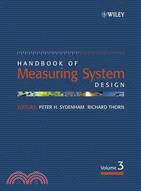






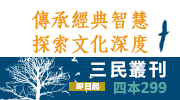



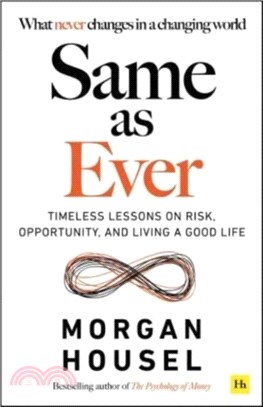

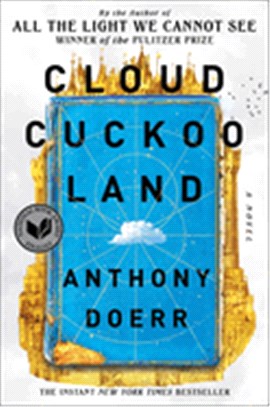

![Wicked [Movie Tie-In]:魔法壞女巫電影原著](https://cdnec.sanmin.com.tw/product_images/006/006285284.jpg)

